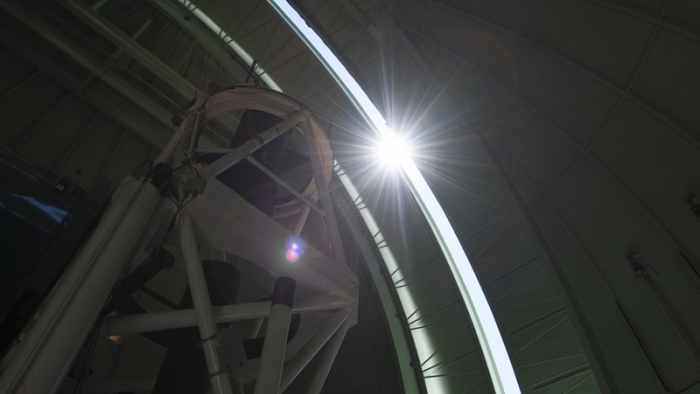DECam's nearby discoveries
 |
| The Dark Energy Camera does more than its name would lead you to believe. Photo: Reidar Hahn |
The Dark Energy Camera, or DECam, peers deep into space from its mount on the 4-meter Victor Blanco Telescope high in the Chilean Andes.
Thirty percent of the camera's observing time—about 105 nights per year—go to the team that built it: scientists working on the Dark Energy Survey.
Another small percentage of the year is spent on maintenance and upgrades to the telescope. So who else gets to use DECam? Dozens of other projects share its remaining time.
Many of them study objects far across the cosmos, but five of them investigate ones closer to home.
Overall, these five groups take up just 20 percent of the available time, but they've already taught us some interesting things about our planetary neighborhood and promise to tell us more in the future.
Far-out asteroids
Stony Brook University's Aren Heinze and the University of Western Ontario's Stanimir Metchev used DECam for four nights in early 2014 to search for unknown members of our solar system's main asteroid belt, which sits between Mars and Jupiter.
To detect such faint objects, one needs to take a long exposure. However, the paths of these asteroids lie close enough to Earth that taking an exposure longer than a few minutes results in blurred images. Heinze and Metchev's fix was to stack more than 100 images taken in less than two minutes each.
With this method, the team expects to measure the positions, motions and brightnesses of hundreds of main belt asteroids not seen before. They plan to release their survey results in late 2015, and an early partial analysis indicates they've already found hundreds of asteroids in a region smaller than DECam's field of view—about 20 times the area of the full moon.
Whole new worlds
Scott Sheppard of the Carnegie Institution for Science in Washington DC and Chad Trujillo of Gemini Observatory in Hilo, Hawaii, use DECam to look for distant denizens of our solar system. The scientists have imaged the sky for two five-night stretches every year since November 2012.
Every night, the DECam's sensitive 570-megapixel eye captures images of an area of sky totaling about 200 to 250 times the area of the full moon, returning to each field of view three times. Sheppard and Trujillo run the images from each night through software that tags everything that moves.
"We have to verify everything by eye," Sheppard says. So they look through about 60 images a night, or 300 total from a perfect five-night observing run, a process that gives them a few dozen objects to study at Carnegie's Magellan Telescope.
The scientists want to find worlds beyond Pluto and its brethren—a region called the Kuiper Belt, which lies some 30 to 50 astronomical units from the sun (compared to the Earth's 1). On their first observing run, they caught one.
This new world, with the catalog name of 2012 VP113, comes as close as 80 astronomical units from the sun and journeys as far as 450. Along with Sedna, a minor planet discovered a decade ago, it is one of just two objects found in what was once thought of as a complete no man's land.
Sheppard and Trujillo also have discovered another dwarf planet that is one of the top 10 brightest objects beyond Neptune, a new comet, and an asteroid that occasionally sprouts an unexpected tail of dust.
Read more
—Liz Kruesi
|